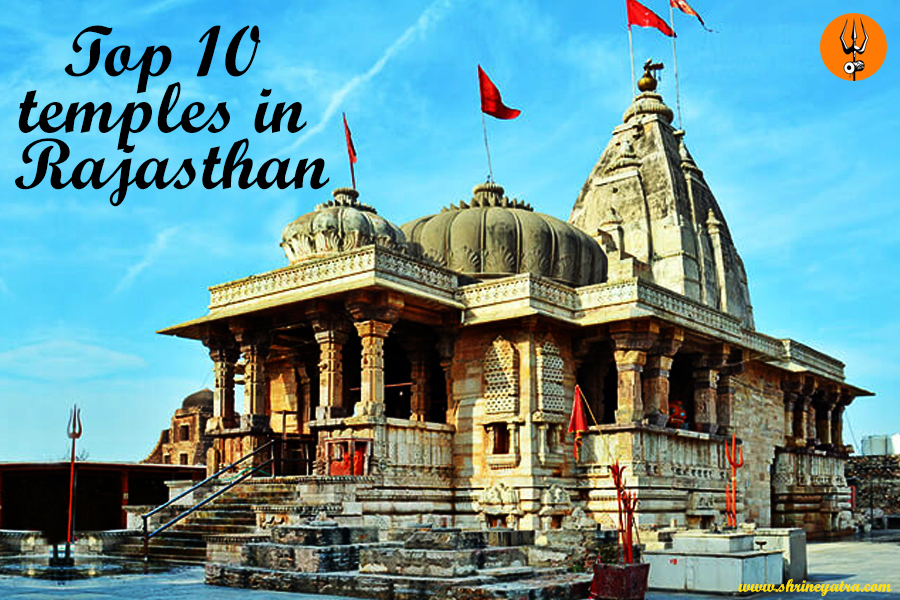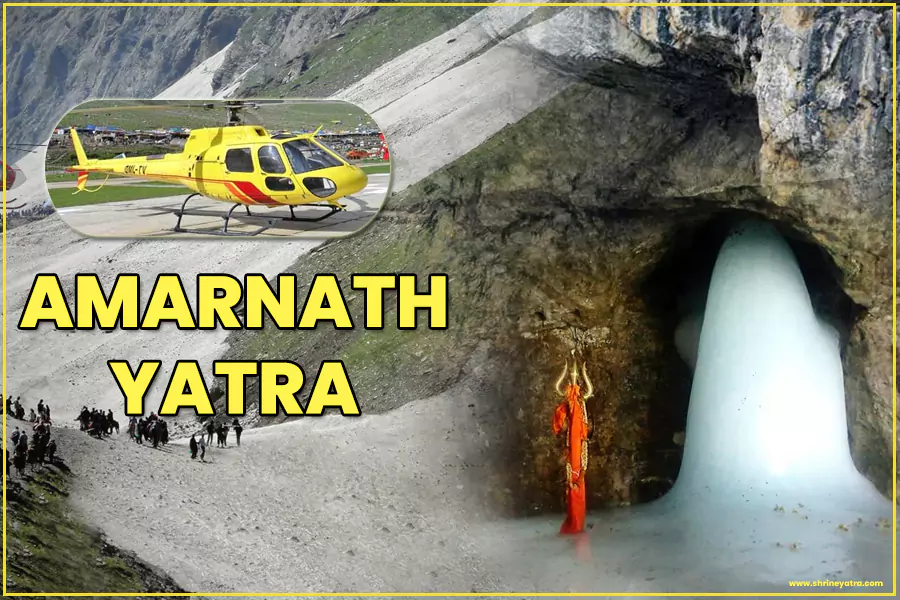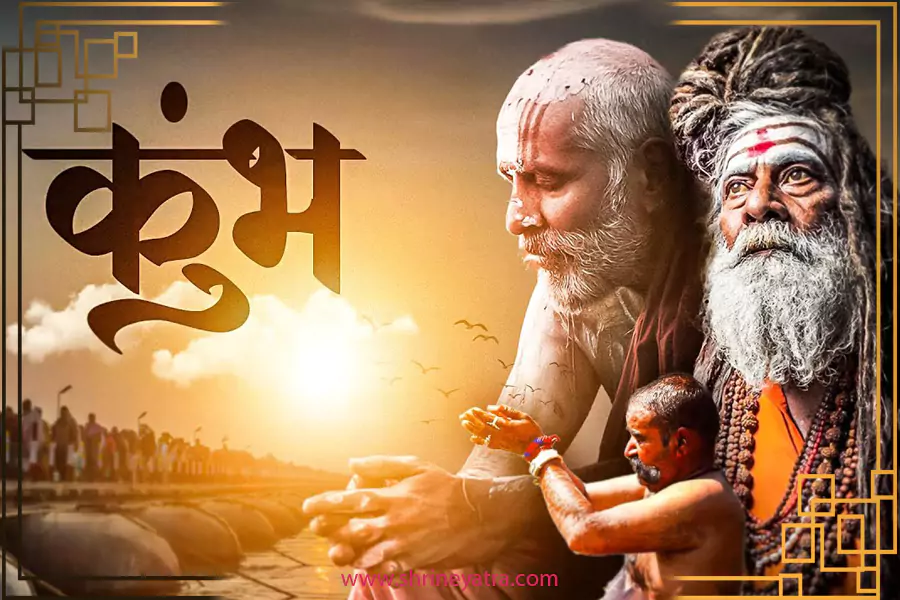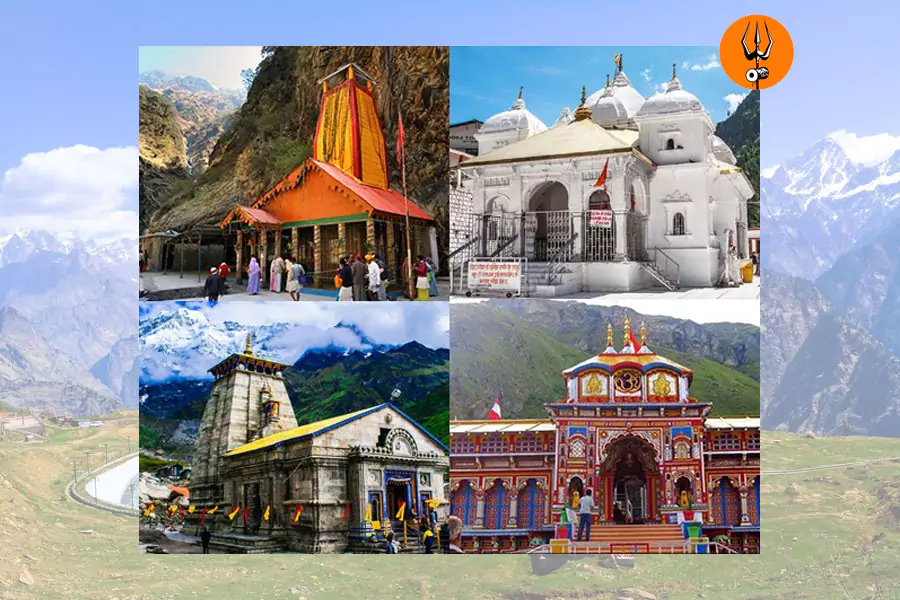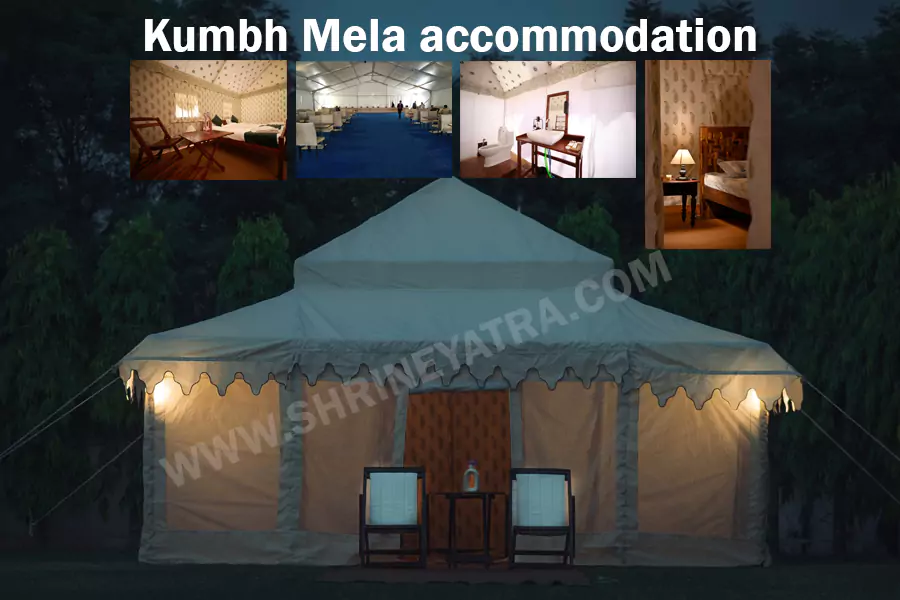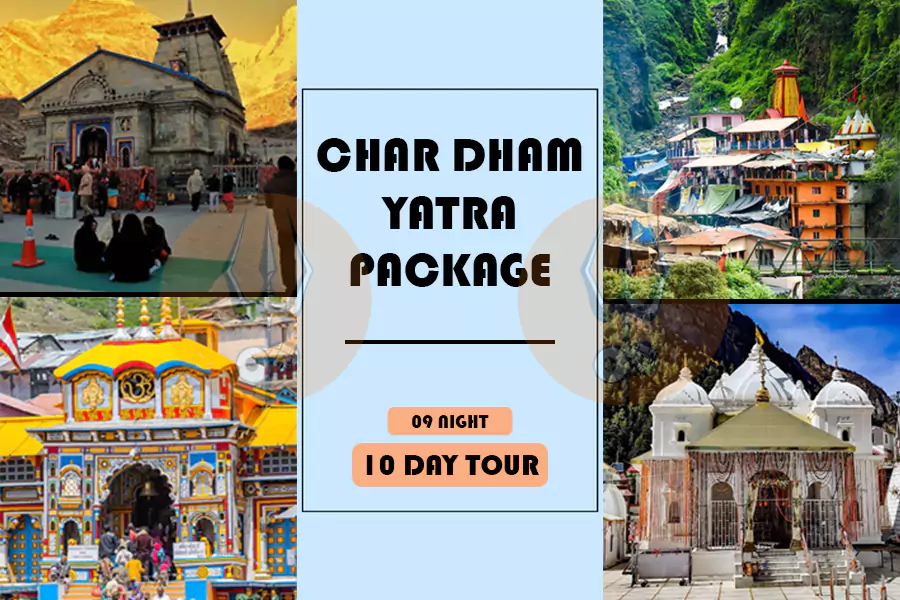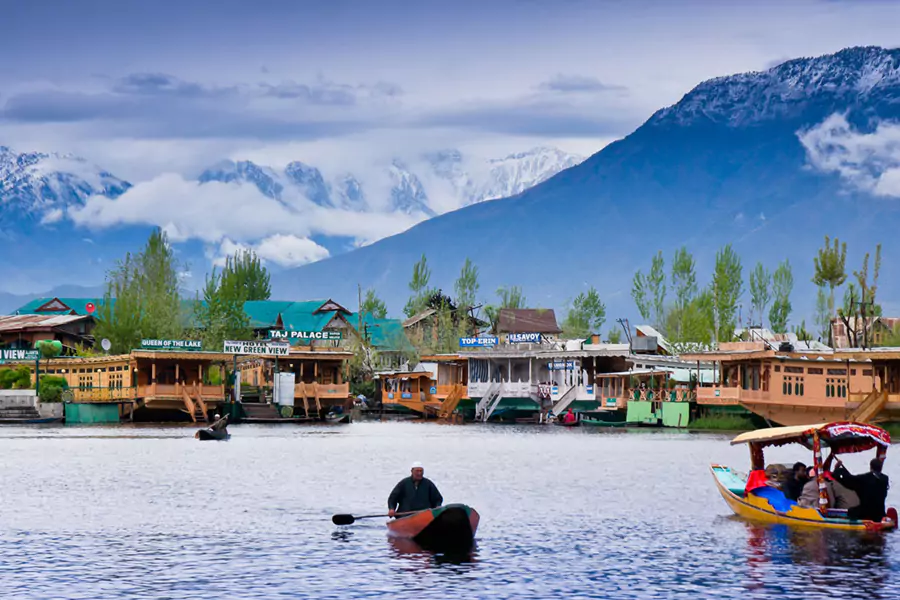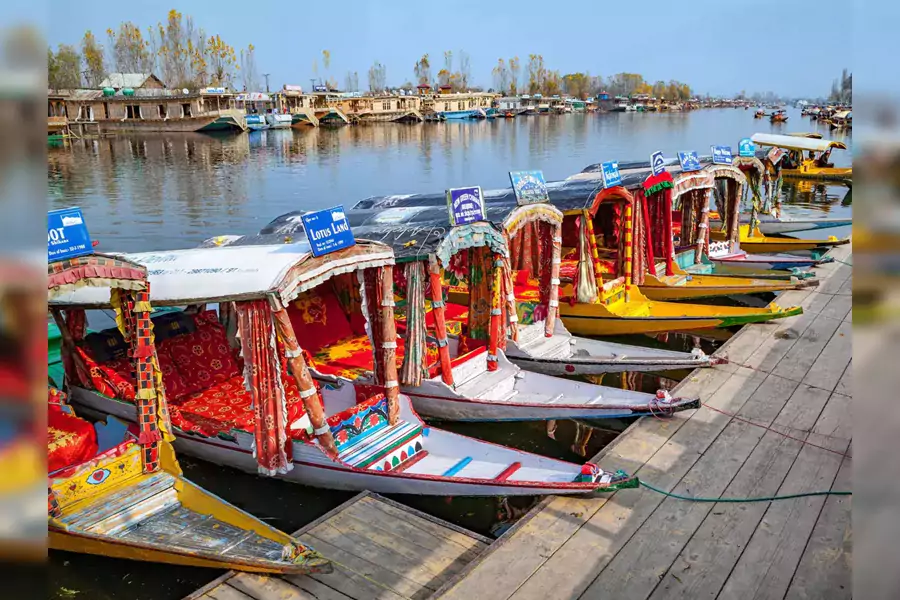temples in Rajasthan: The magnificent temples that dot the landscape of Rajasthan haven’t been truly experienced until you’ve explored their cultural wonders. Rajasthan is home to some of India’s most astonishing places of worship, from intricately carved sandstone structures to mountaintop shrines offering panoramic views.
Through architectural marvels that have stood for centuries, be prepared to travel back in time as you traverse the state. Your soul will come away with a lasting impression from the temples of Rajasthan, regardless of whether you’re merely appreciating their artistic mastery or paying homage to deities like Shiva, Vishnu and Hanuman. 10 of the most spectacular, humbling temples that this list highlights must be visited for a trip to Rajasthan to be complete.
In this article, we will explore the top 10 must visit temples in Rajasthan and provide you with all the essential information to plan your visit.
If you’re looking for peace and spirituality, you can visit all the places in Rajasthan through our great Rajasthan Tour Packages deal!
Here are famous top 10 temples in Rajasthan:
- Karni Mata Temple, Bikaner– Home to thousands of sacred rats
- Dilwara Temples, Mount Abu- Intricate carvings and stunning craftsmanship
- Laxmi Niwas Palace, Bikaner
- Jain Temples of Ranakpur- Exquisite marble architecture
- Brahma Temple, Pushkar- Only temple dedicated to Lord Brahma
- Mehandipur Balaji Temple, Dausa- Known for exorcism rituals and healing powers
- Eklingji Temple, Udaipur- Dedicated to Lord Shiva and intricately carved
- Govind Dev Ji Temple, Jaipur- Sacred shrine of Lord Krishna
- Birla Mandir, Jaipur-Beautiful white marble temple with intricate sculptures
- Osian Temples, Jodhpur- Ancient group of Hindu and Jain temples
- Conclusion highlighting the diverse architectural styles and spiritual significance.
If you are planning to visit Rajasthan? Here, we have compiled a list of Top 10 Places to Visit in Rajasthan that should be on your wishlist!
1.) Karni Mata Temple, Bikaner- Home to thousands of sacred rats.
Dedicated to Karni Mata, an incarnation of Goddess Durga, the Karni Mata Temple is one of Rajasthan’s most revered religious sites. Within Bikaner’s temple, more than 20,000 black rats reside and are venerated by the community.
The 14th century saw Lakhan, Karni Mata’s stepson; meet his demise in a pond. Praying to Yama, the god of death, Karni Mata sought to revive him. As per tradition, the male offspring of Karni Mata, including Lakhan, transformed into rats when Yama relented.
Feeding the Rats
Devotees gather far and wide to pay respects to the kabbas. By those who feed the rats, good luck and blessings are believed to come. Freedom of movement allows temple rats to search for food, including grains, sweets, and milk, by climbing onto guests.
Temple Architecture
With elaborately carved pillars and frescoes, the temple boasts a distinct Rajasthani style. Funded by Maharaja Ganga Singh of Bikaner, the entrance features a colossal silver gate. The temple complex shelters smaller shrines dedicated to various deities such as Lord Ganesha, Lord Hanuman, and Goddess Durga.
At the Karni Mata Temple, one gets a flavor for the rich culture and old traditions of Rajasthan. It’s a singular occasion when a temple as extraordinary as this one, featuring revered inhabitants and breathtaking architecture, hosts your visit.
2.) Dilwara Temples, Mount Abu- Intricate carvings and stunning craftsmanship
Five stunning Jain temples are grouped together at Mount Abu, Rajasthan’s sole hill station. Marble carvings and careful crafting define these temples, constructed between the 11th and 13th centuries.
Showcasing the talent of Jain craftsmen, the Dilwara Temples were constructed from white marble. The five temples are:
Vimal Vasahi, built during 1031 AD, is the eldest of the Dilwara temples. Known for its intricately carved pillars and an assembly hall with 52 compartments is the Jain Tirthankara, Adinath.
Dedicated to Lord Neminath, the 22nd Jain Tirthankara, Luna Vasahi was constructed in 1230 AD. Fine carvings of nymphs, flowers, and religious symbols decorate the pillars, displaying exceptional craftsmanship. Dome and pinnacles intricately carved, the temples are also.
Arches, domes, and porches of Pithalhar, built in 1458 AD, feature elaborate carvings. With 24 shrines featuring idols of varying Jain prophets, the temple stands as a testament.
Built in 1458 AD, Parshvanath honors the 23rd Jain Tirthankara, Lord Parshvanath. A seven-story shrine and sculptures of yakshas and yakshis are among its features.
Dedicated to the 24th and last Jain Tirthankara, Mahaveer Swami, built in 1582 AD, will always be remembered for this reason. Porches and arches made of marble are characteristic of the temple.
Offering a window into India’s cultural heritage, both architecturally and artistically, the Dilwara Temples were created during the 11th to 13th centuries. Centre as they are in Jain pilgrimage, famous marble carvings and engravings they boast.
3.) Laxmi Niwas Palace, Bikaner
Rajasthan boasts of the most impressive royal residences, including the Laxmi Niwas Palace. Under Maharaja Ganga Singh’s rule in 1904, this red sandstone palace was built by Sir Swinton Jacob. As part of the palace has been transformed into a high-end hotel, guests can now indulge in the opulence of monarchial residency.
At the palace, upon arrival, you come face to face with an impressive facade boasting Mughal and Rajput architectural features including intricately designed windows, towers, and balconies. Interiors that rival in beauty, feature pillars, frescoes, and gold filigree work. The Durbar Hall impresses visitors with its floors made of marble, chandeliers of tremendous size, and portraits of old monarchs.
No less noteworthy are the Maharaja’s private quarters, comprising his bedroom, dressing room, and billiards room. Through its boudoir, dressing table, and four-poster bed, the Maharani Suite reveals the queen’s life. By exhibiting a range of rare items, from manuscripts to weaponry, the palace museum offers an intimate glimpse into the history of the area.
Temples, a pavilion, and vast grasslands make up the palace grounds, worth investigating. As night falls, the palace’s most impressive features are dramatically lit, creating an enchanting spectacle. Missing out on the Laxmi Niwas Palace means foregoing any tour of Rajasthan’s royal riches, whether staying as a guest overnight or just stopping by for a visit. Opulence and grandeur reveal the former power and wealth of Bikaner’s ruling class.
4.) Jain Temples of Ranakpur- Exquisite marble architecture
Ranakpur’s Jain temples are among the most remarkable in Rajasthan. The valley of the Aravali Range witnessed the construction of the Ranakpur Jain temple complex in the 15th century, which is dedicated to Tirthankara Adinath.
The Main Temple
Chaumukha Mandir, the primary temple, boasts an impressive structure with 1,444 expertly fashioned marble columns. Each pillar exists differently in design and carving. Completed after 65 years, the temple is built totally of marble. With 14,444 distinct design marble pillars supporting its 29 halls.
Other Temples
In addition to the main temple, the complex contains several other Jain temples:
- The Neminath Temple, with 22 halls supported by 1,000 pillars.
- The Parshvanath Temple, with engraved images of the Tirthankara Parshvanath.
- Goddess Amba is worshipped at the Amba Mata Temple.
Architectural Grandeur
Architectural excellence is reflected in the Ranakpur Jain temple complex. Curved lines and fine details highlight the abilities of the skilled stonemasons in the temples. Marble is embellished with intricate nymph, flower, and religious symbol carvings throughout the temples. Skyward reaching, domes and spires express admiration and spirituality.
Exploring the grandeur of Rajasthan’s structures requires visiting the Jain temples of Ranakpur. Reflective of the profound devotion of the Jain religion, the complex showcases its scale, craftsmanship, and peaceful environment.
5.) Brahma Temple, Pushkar- Only temple dedicated to Lord Brahma
Pushkar’s Brahma Temple is one of the few temples devoted to Lord Brahma, universe creator in Hinduism. At Pushkar in Rajasthan, the holy city of Brahma Temple holds significance for Hindu pilgrims.
According to legend, Pushkar Lake was the site of Lord Brahma’s yajna (a sacrificial ritual). By Lake, a lotus once held by the hands of Lord Brahma was transformed into a temple during the yajna. Destroyed by invaders before being reconstructed in the 14th century, this temple. Featuring a red spire and marble floors, the current structure stands.
Held in either October or November, the Pushkar Fair is considered the most significant festival. Temple visits during this season are often for devotees to receive Lord Brahma’s blessings. Called the Garbha Griha, the temple’s inner sanctum houses the four-faced idol of Lord Brahma. Hindus are the ones allowed to enter the temple.
Some key highlights of the Brahma Temple include:
- A beautiful marble structure with intricate carvings and sculptures.
- The four-faced idol of Lord Brahma, the creator of the universe in Hinduism.
- The sacred Pushkar Lake, where Lord Brahma is said to have dropped a lotus that manifested into the temple.
- The annual Pushkar Fair, when thousands of devotees visit the temple.
If you get a chance to explore the magnificent temples of Rajasthan, the Brahma Temple in Pushkar should be at the top of your list. As one of the few temples in the world dedicated to Lord Brahma, it holds immense religious significance and is an architectural masterpiece. A visit to this temple will leave you spiritually rejuvenated.
6.) Mehandipur Balaji Temple, Dausa- Known for exorcism rituals and healing powers
The Mehandipur Balaji Temple is found within the Dausa district of Rajasthan, approximately 35 kilometres from Jaipur. Hanuman, the monkey god, is the subject of this ancient Hindu temple.
Architecture and Design
A minimalist structure, the temple still impresses. Within red stone and marble, the main temple boasts several domes and pillars. A large open courtyard, used for rituals and ceremonies, stands before the main temple. Several small shrines dedicated to other deities encircle the courtyard.
Deities and Worship
Worship focuses on Lord Hanuman, the powerful monkey warrior deity, who is primary here. Besides Lord Hanuman, devotees also honor Lord Shiva, Goddess Parvati, Lord Ganesha, and Naga Devta.
Rituals and Festivals
Its exorcism rituals make the temple a sanctuary for those afflicted by malevolent spirits and possessed by ghosts (pret atma). At temples, devotees may stay for extended periods engaging in special ceremonies and fire rituals to release them from evil spirit influence.
Commemorating Lord Hanuman’s birth, Hanuman Jayanti is the most vital festival. Festivities include prayer, deity bathing, and processions during this time.
Visiting the Temple
Each day of the week from 5 am to 10 pm, the Mehandipur Balaji Temple is accessible. Weekends and holidays are when the attraction tends to get overcrowded, so it’s best to arrive early. All devotees, irrespective of their beliefs, are welcomed warmly by the temple.
7.) Eklingji Temple, Udaipur- Dedicated to Lord Shiva and intricately carved
Eklingji Temple, being a place of great religious significance in Rajasthan, is highly regarded. Within a high-walled compound, 22 km north of Udaipur, lies the temple, which was constructed in 734 AD.
Architecture and Design
Religious scenes from Hindu epics are portrayed through intricate carvings and sculptures that define the Nagara architecture style. Located in the main temple, the striking four-faced black marble statue of Lord Shiva is Eklingnath’s standout attribute. With beautiful frescoes on its halls and walls, the temple tower, designated shikhara, rises up to 50 feet high.
Religious Significance
Temples considered Eklingji as the Mewar dynasty’s leading deity. Paying obeisance to their kuldevta, the Maharana of Udaipur visits Shiva every Monday. In February/March and March, two significant festivals, Shivratri and Mahashivratri, are celebrated with great fanfare.
Visiting Information
Open daily from 6 am to 7 pm, the temple offers visitors convenience. Morning prayer sessions, dubbed ˜aarti, happen at 6 am and 7 pm. No photography is allowed within the temple premises. The temple administration office imposes a minor fee for camera and video usage. Avoiding large crowds, the temple is best visited during non-festival days.
Its religious importance, architectural brilliance, and beautiful natural surroundings make the Eklingji Temple a ‘must-visit’ spiritual location in Rajasthan. This ancient Shiva place of worship can fill you with its tranquil energy.
8.) Govind Dev Ji Temple, Jaipur- Sacred shrine of Lord Krishna
Dedicated to Lord Krishna, one of the most revered temples in Jaipur is the Govind Dev Ji Temple. By Raja Sawai Jai Singh II, the statue of Govind Dev Ji was transferred from Vrindavan to Jaipur, per legend.
Visiting this temple requires heading towards the Jaipur City Palace complex’s central area. The temple’s design harmoniously merges Rajasthani and Mughal architectural elements. Govind Dev Ji’s idol, a revelation of Lord Krishna, lies within the main shrine upon entrance. The deity is adorned in royal robes and jewellery, and darshan timings are from 4: 30 am to 11:30 am and 5:30 pm to 9 pm.
To accommodate locals and pilgrims, the temple’s courtyard has more miniature shrines, which provide a place for all to sit, pray, and indulge in the pleasure of prasad. The temple’s vibrancy is a highlight during events marking Lord Krishna’s importance, including Janmashtami and Holi.
Keep it in mind before visiting:
- Dress conservatively by covering your arms and legs.
- Leave electronics like cameras outside. Photography is prohibited inside the temple.
- Offerings like flowers, sweets or coins may be made.
- Listen for the blowing of the conch shell, which signals the opening of the temple doors.
- Chanting of ˜Radhe Radhe and ˜Jai Shri Krishna is common.
Inside this reverent place, embrace the spiritual air as you connect with your inner devotion. Rajasthan’s most remarkable temples can be fully appreciated when proper etiquette is observed.
9.) Birla Mandir, Jaipur-Beautiful white marble temple with intricate sculptures
Temple of Birla Mandir, a Hindu place of worship found in Jaipur, Rajasthan. Rajasthani architecture’s stunning example, the temple is completely constructed of white marble.
By the Birla Group of Industries in 1988, the temple was built and honors Lord Vishnu and Goddess Lakshmi. Single marble statue of Vishnu and Lakshmi, found within the temple complex. Ornate carvings, showcasing narratives from Hindu scripts, embellish the temple’s walls and columns.
For people of any religion or background, the temple is open to visitors. Temple entry requires removal of shoes and hand/foot washing of visitors. No photography is allowed within the temple. Visiting the Birla Mandir is best during festivals when the temple is tastefully adorned, such as Janmashtami, Holi, or Diwali.
A combination of modern and traditional Rajasthani architectural styles define the temple. With domes and archways, a three-story structure rests on a high platform. The temple was built with only Rajasthan’s best white marble. A single marble block was used to create idols of Lord Vishnu and Goddess Lakshmi. From Hindu mythology and scripture, the temple’s interior designs feature carvings and paintings that depict scenes.
A prominent landmark in Jaipur, the Birla Mandir welcomes thousands of pilgrims and tourists every year. The grandeur of the temple complex plus the spiritual atmosphere make it essential. By its beauty and serenity, a visit to this temple will leave you enchanted.
10.) Osian Temples, Jodhpur- Ancient group of Hindu and Jain temples
Inside the town of Osian, situated 65 km north of Jodhpur, lie the ruins of the Osian Temples, Hindu and Jain temples in one grouping. A singular architectural style characterizes these temples, constructed between the 8th and 12th centuries.
Among the 18 shrines, the Sachiya Mata Temple and the Mahavira Jain Temple stand out as the most beautiful. From the tower to the intricately carved pillars, the Sachiya Mata Temple is home to a remarkable sculpture of Durga. A dome and intricate carvings characterize the Mahavira Jain Temple, which honors the 24th Jain Tirthankara.
Other notable temples include:
- Sun Temple, featuring a pyramidical roof and sculpted pillars.
- Jagat Shiromani Temple, with circular sanctum and carved toranas (arched gateway).
- Harihara Temple, dedicated to Vishnu and Shiva, with a sandstone shikara (spire).
- Amba Mata Temple, with a square sanctum and porch supported by lathe-turned columns.
The Osian Temples exemplify the architectural and artistic mastery of the Gurjara-Pratihara dynasty that ruled the region during that era. The temples showcase a seamless blend of Hindu and Jain architectural styles with elaborate carvings, ornate pillars, intricately sculpted shikharas, and mandapas (halls).
Though most of the temples lie in ruins, with some shrines missing their shikharas, their architectural splendor and historical significance make them an important landmark. The temples remain an impressive reminder of the artistic and cultural achievements of the Gurjara-Pratihara period in Rajasthan.
Conclusion highlighting the diverse architectural styles and spiritual significance.
Temple architectural and spiritual beauty are what Rajasthan is renowned for. By showcasing a wide range of architectural styles from various periods, the temples capture the cultural richness of the region.
Architectural Wonders
Ranging from the 7th century Nagda and Eklingji temples to the grand City Palace in Udaipur, built in the 16th century, the architectural styles of Rajasthani temples are wide and varied. Ornate carvings, pillars, and mandapas characterize the Nagda and Eklingji temples, constructed during the Gurjara-Pratihara dynasty. While the City Palace incorporates Mughal and Rajasthani design elements, its domed arches, terraces, and turrets offer picturesque vistas of Lake Pichola.
An eclectic mix of architectural prowess accommodates the intricately adorned Saas-Bahu Temple in Nagda, the lovingly crafted Ranakpur Jain temple with 1,444 carved pillars, and the grandly designed Dilwara Jain Temples on Mount Abu featuring masterfully carved marble work and impressive dome architecture. Across centuries, the cultural evolution of Rajasthan has been evident in the various temple architectural styles.
Spiritual Significance
Religious significance is not the only aspect that makes the temples of Rajasthan stand out. Devotees of Hinduism and Jainism view these sites as sites of great spiritual significance. By Jains, the Ranakpur and Dilwara Jain temples are regarded as sacred pilgrimage centers. Annually, countless followers visit popular sanctuaries, such as the Meera Bai Temple in Udaipur, honoring Lord Vishnu, and the Govind Dev Ji Temple in Jaipur.
Rajasthan’s temples have stood the test of time, acting as a symbol of historical significance and cultural inheritance. Within the realm of worship and awe, these places endure as eternal sanctuaries, bound by a single purpose.
Rajasthan’s Western Indian state is revealed as a living museum of architectural splendor upon seeing the photographs and descriptions of the top 10 most famous temples in Rajasthan. A testament to the artistic vision, cultural values, and spiritual devotion of those from the past are these historic stone edifices. The deeper meaning of these masterpieces transcends an initial visual appeal.
An open heart will allow you to hear the stories that these temples hold in Rajasthan. These sacred sites may seem distant, but the memories will endure for years to come.

